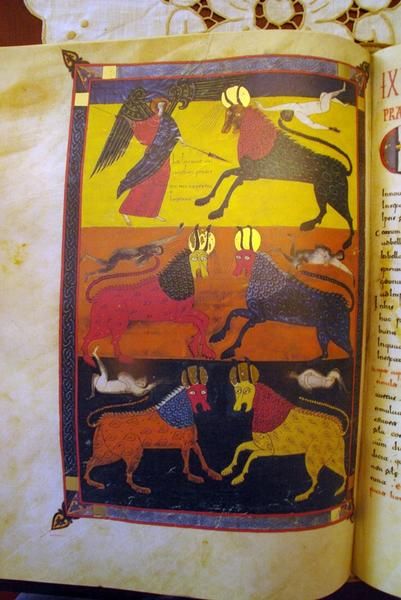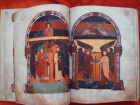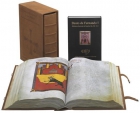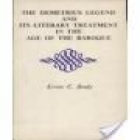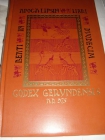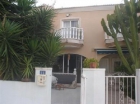Facímil Beato de Liébana Códice Fernando I y Doña Sancha
Categoría: Compra - Venta
Subcategoría: Otras ventas
Subcategoría: Otras ventas
Precio:
Llame para el precio
- o -
Contactar al proveedor
[Madrid, Biblioteca Nacional, vitr. 14-2]Beato de Liébana. Códice de Fernando I y Doña Sancha.
Barcelona: M. Moleiro Editor, 1994. 26.8 x 36 cm, 624, 244 pp. Precio: 3900 euros.
Este códice, también conocido como " Beatus de Facundus " (por el nombre del ilustrador), es considerado el más hermoso y completo de todos los manuscritos Beatus y el único de origen real. El Beatus fue hecho para el Rey y la Reina de Castilla y León en 1047 y más tarde enviado a la Iglesia Colegiada en Isidoro San. Durante la Guerra de Sucesión fue requisado por Felipe V y enviado a la Biblioteca Real. Hoy este manuscrito es uno de los tesoros más valiosos de la Biblioteca Nacional en Madrid; con su estado perfecto de preservación y su color homogéneo en las miniaturas - sin variación en la intensidad - da la sensación de ser casi nuevo. El manejo de la policromía y el dominio de trazo pintor son magníficos. Aunque el estilo del códice sea Mozárabe, los primeros rastros del arte románico fuera de Cataluña son claramente visibles. La belleza de las miniaturas es asombrosa, cautivando por su poder expresivo y originalidad. Comentario por Joaquin Yarza Luaces y Manuel Sánchez Mariana. La edición limitada de 777 copias, con acabado y encuadernación de madera y piel. [84-88526-03-2]
This codex, also known as “Facundus’ Beatus” (after the name of the illuminator), is considered the most beautiful and complete of all the Beatus manuscripts and the only one of royal origin which might be the reason for its abundance of gold leaf. The Beatus was made for the King and Queen of Castile and León in 1047 and later sent to the Collegiate Church in San Isidoro. During the War of Succession it was requisitioned by Philip V and sent to the Royal Library. Today the MS is one of the most valuable treasures of the Biblioteca Nacional in Madrid; with its perfect state of preservation and its homogenous color in the miniatures—with no variation in intensity—it gives the sensation of being almost new. The command of the polychromy and the mastery of the painter is superb. Although the style of the codex is Mozarabic, the first traces of the Romanesque outside of Catalonia are clearly noticeable. The beauty of the miniatures is amazing, leaving one captivated by its expressive power and originality. Commentary by Joaquin Yarza Luaces & Manuel Sánchez Mariana. Limited edition of 777 copies, bound in suede with wooden boards. [84-88526-03-2]
Posibilidad de entrega en Madrid

